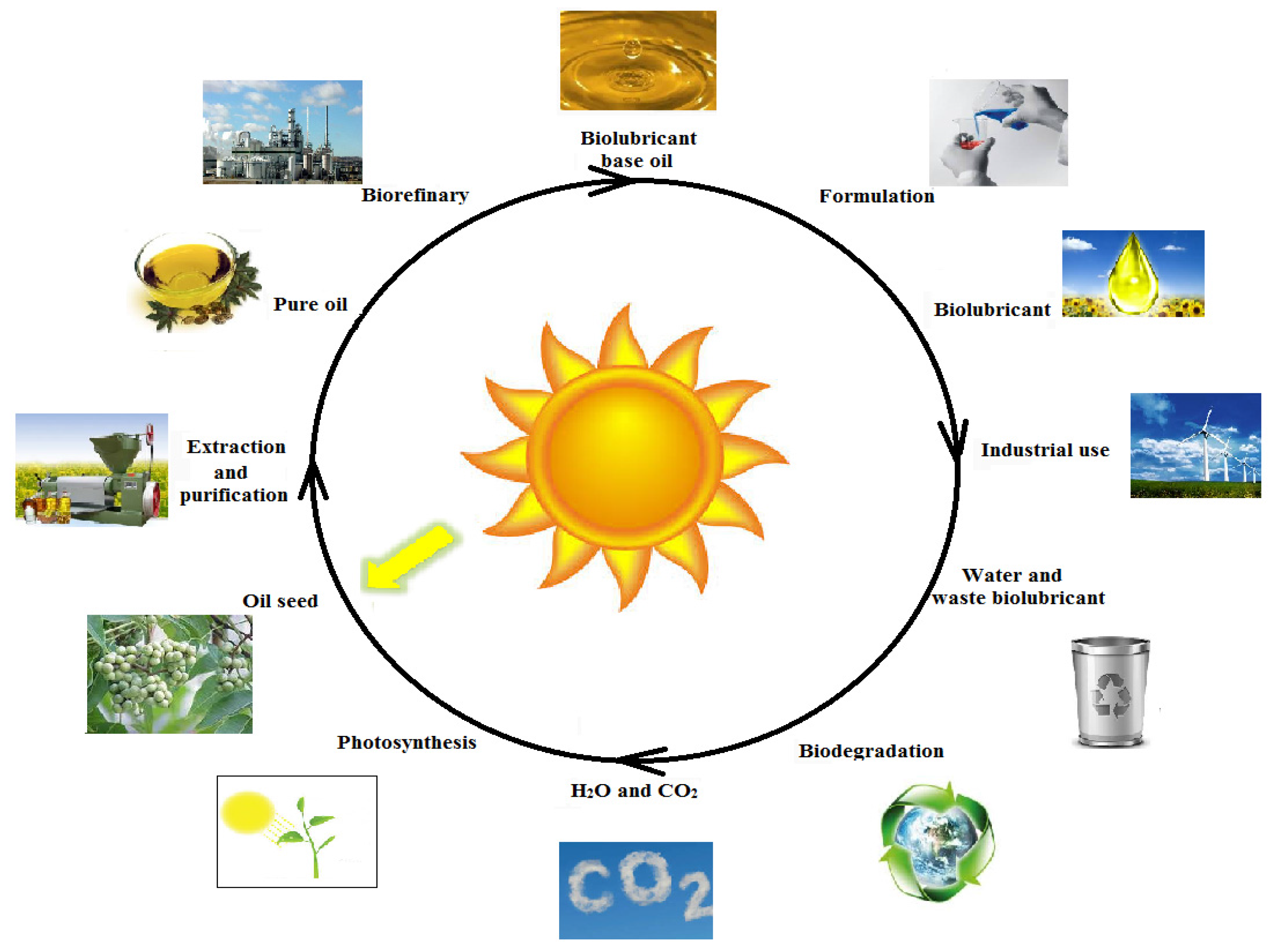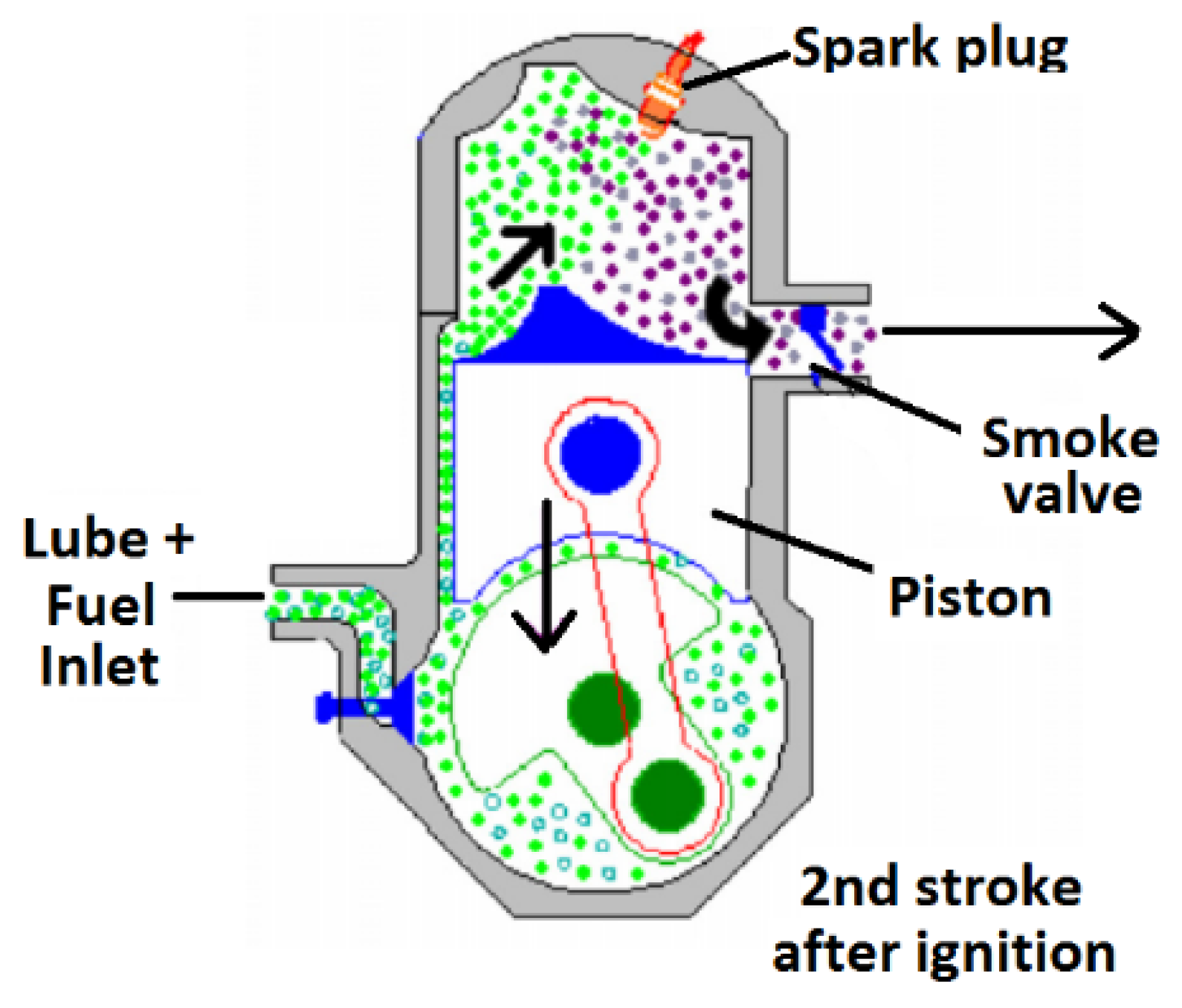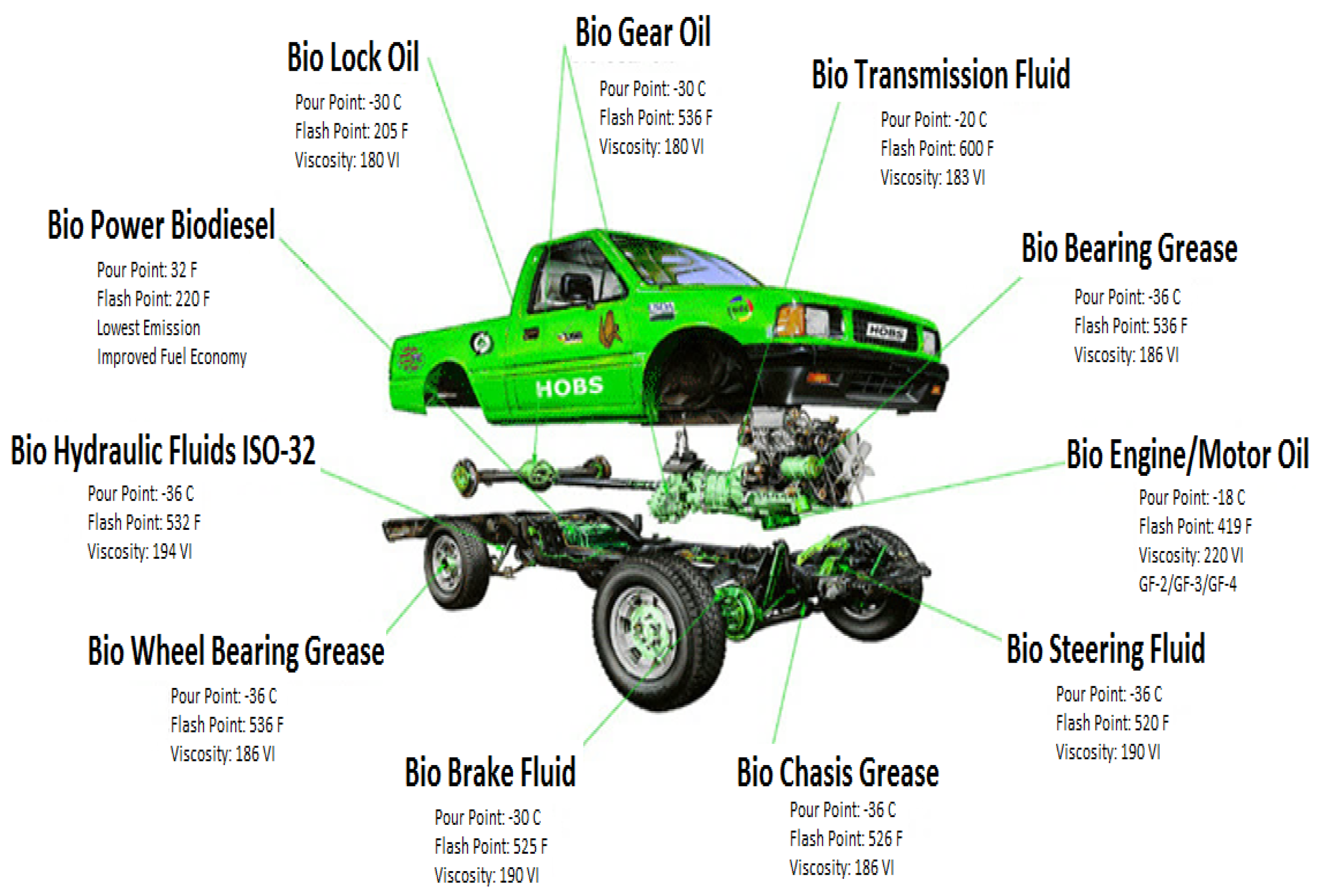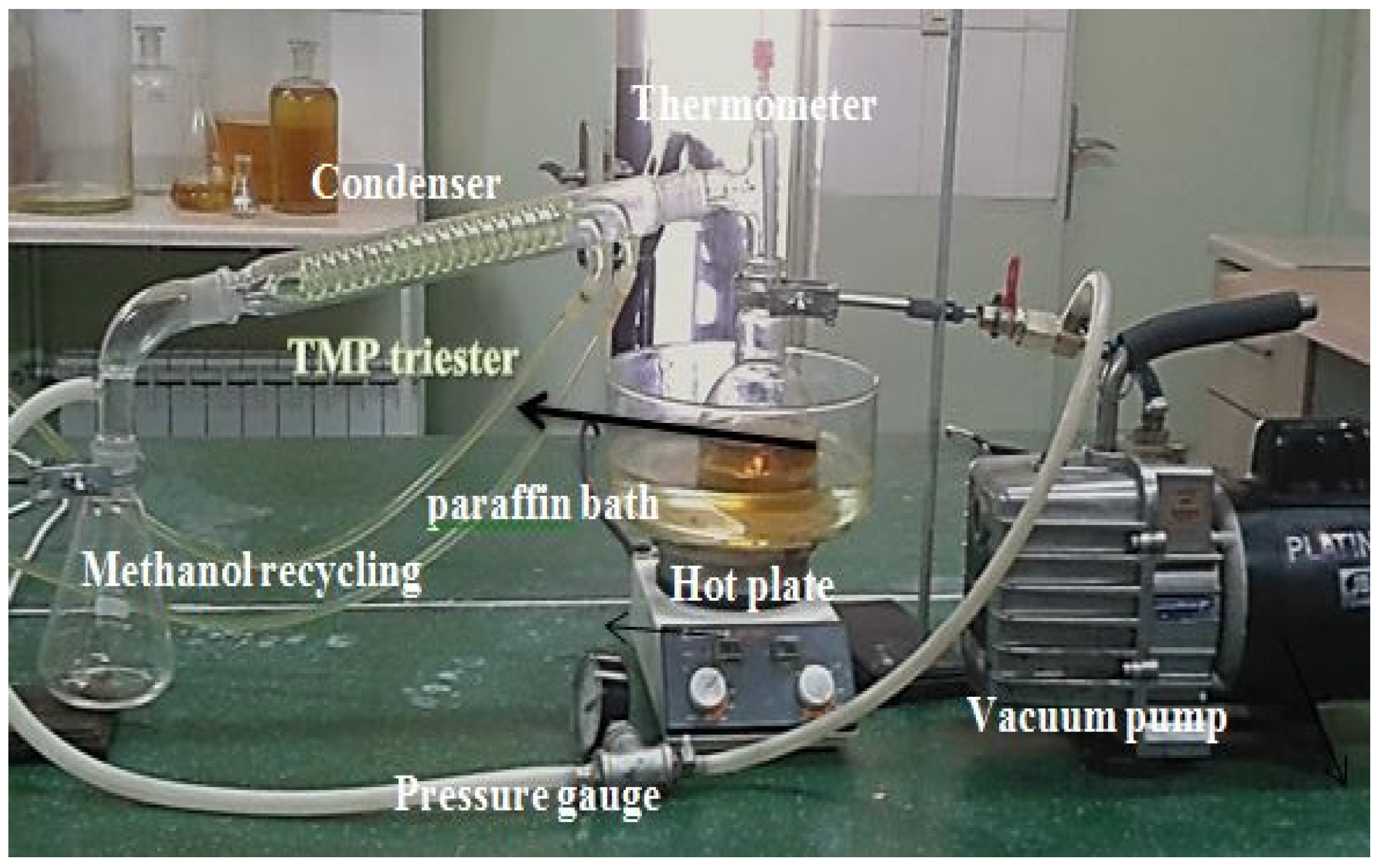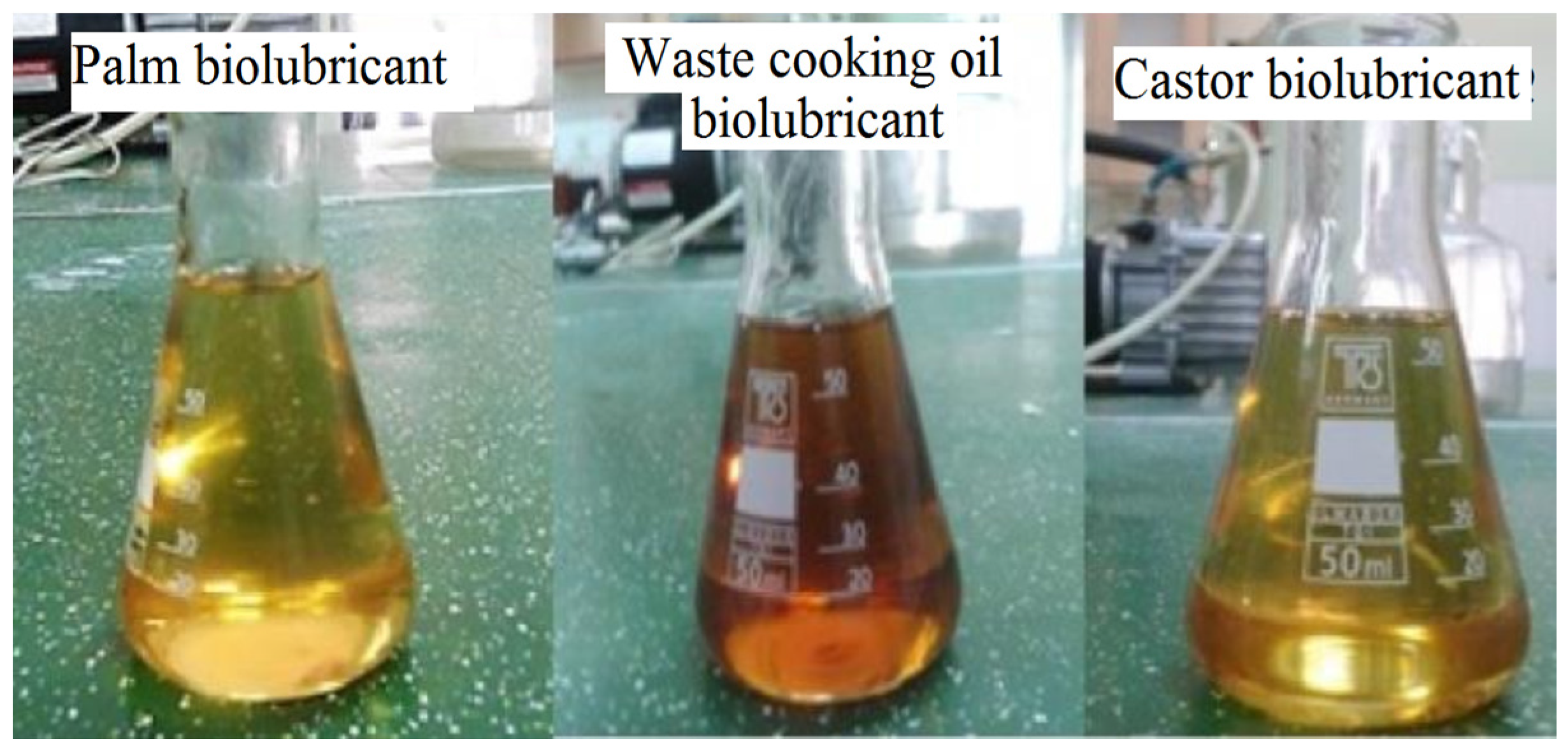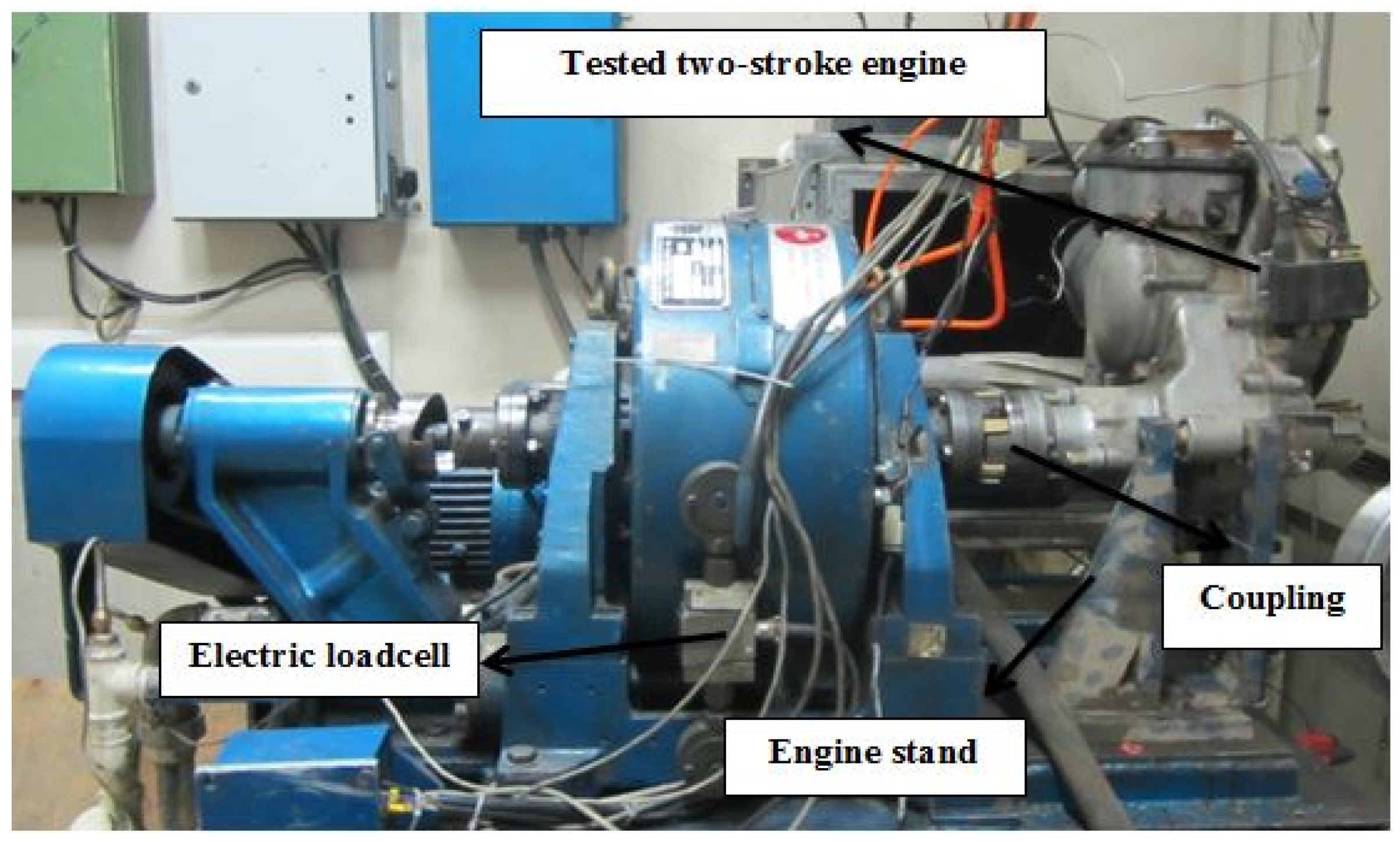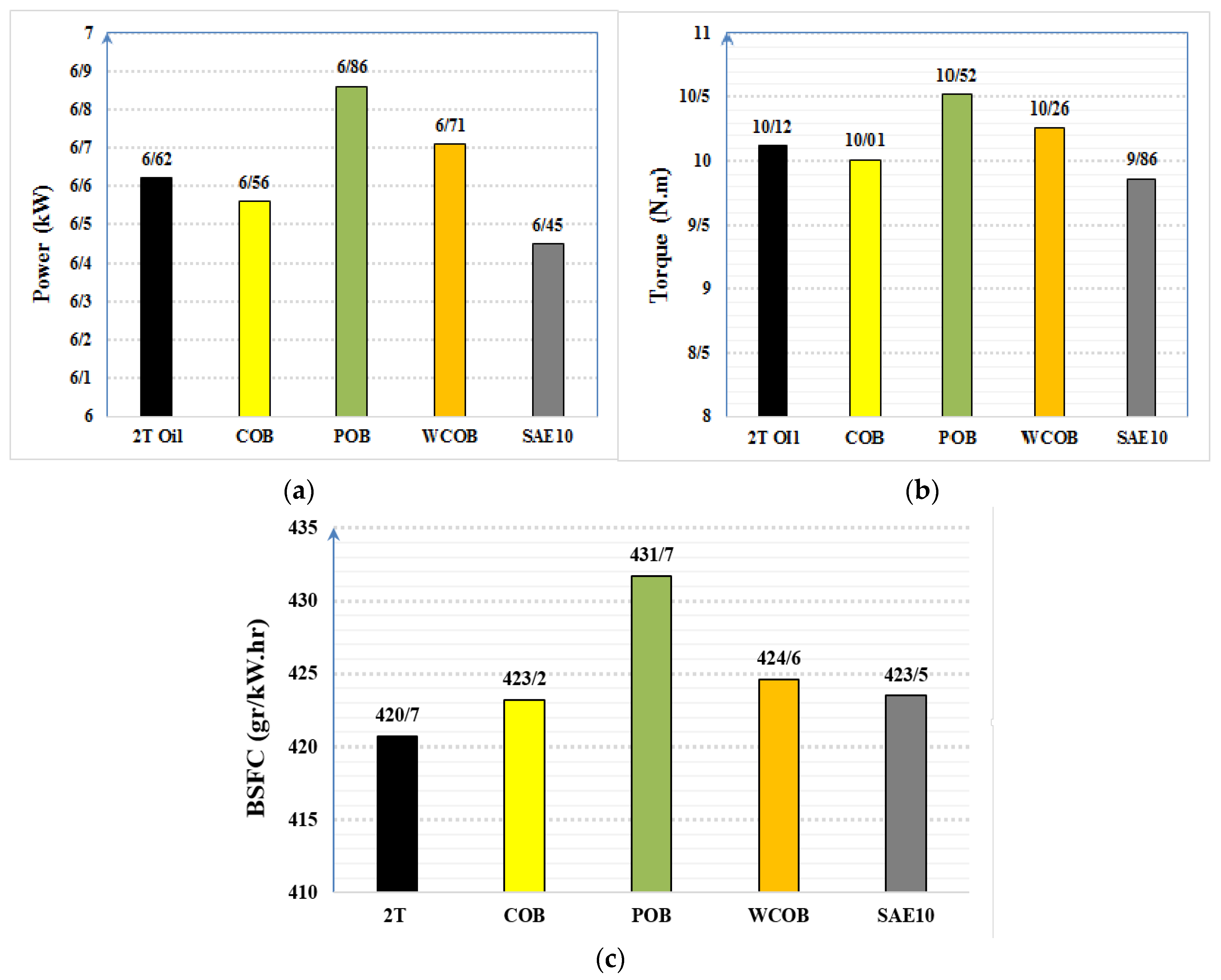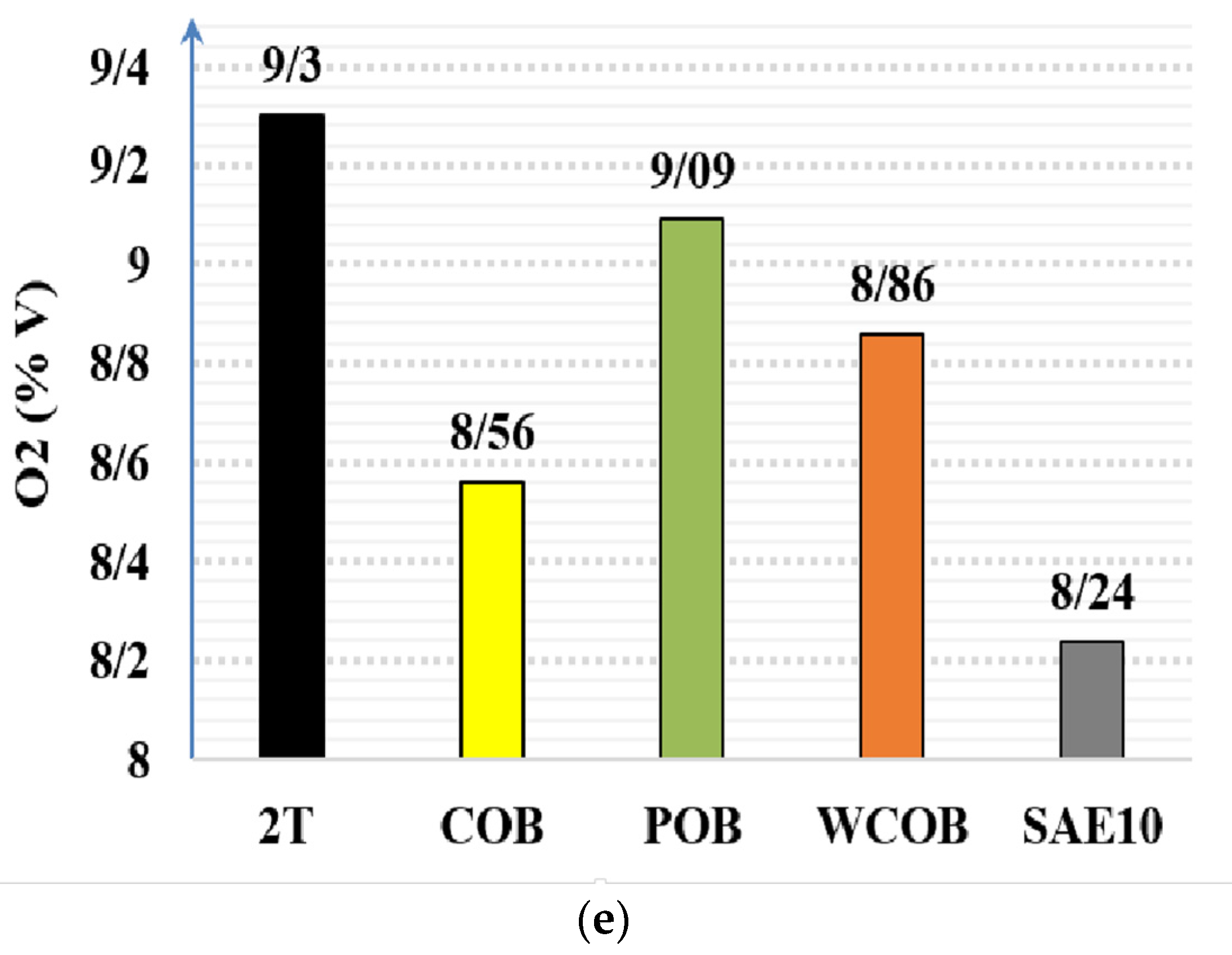1. Introduction
In the present century, internal combustion engines constitute a major portion of the crude oil resource consumption, and have become one of the largest consumers of energy. Therefore, it is necessary to pay attention to the methods of reducing the fuel consumption of these engines. Since about one third of the energy loss of internal combustion engines belongs to frictional losses, it is possible to easily perceive that the proper lubrication of different parts of the engine with the aim of friction decrease in its moving parts has a great impact on reducing energy losses and fuel consumption. Generally, engine oil is one of the vital fluids in engines and by lubricating different parts, it plays the role of blood in the body’s circulatory system. On the other hand, unfortunately this important liquid also has a petroleum-based origin like the fuels used in the engine and depends upon the perishable and expensive oil resources meaning one cannot rely on them for long. In addition, millions of tons of lubricants are used and the resultant oils are spread in the natural environment and cause environmental pollution every year [
1]. This is one issue, while the other independent issue is the environmental pollution that appears as a result of the mixed burning of the lubricants and engine fuels. Therefore, the production of lubricants through renewable and environmentally friendly resources such as vegetable oils has received unprecedented attention today. Vegetable oil-based lubricants, which are called biolubricants, do not pollute the environment due to their desired biodegradation in addition to their renewable nature because of their dependence on plant sources. Biolubricants, which are derived from the chemical modification of vegetable oils, are free of the disadvantages to vegetable oils such as high pour point and low oxidation stability, and they show great potential to replace petroleum-based lubricants [
2].
Figure 1 shows the life cycle of biolubricants.
Figure 1.
Biolubricants LCA.
Figure 1.
Biolubricants LCA.
A two-stroke engine is a type of internal combustion engine, which completes one engine cycle in each revolution of the crankshaft (two courses) and has the potential for the two-foldpower production of similar four-stroke engines. Four-stroke engines have replaced them in automobiles due to lower emissions, longer life, and lower fuel consumption [
3]. However, these engines are still in demand because of their simple design, light weight, high power generation, good cold start behavior, and relatively low cost and are used as a well-known power source in two-wheel tractors, cut-tree motor saws, lawn mowers, small power generation engines, motor boats, motorcycles,
etc. [
3]. Since two-stroke engines do not have a closed crankcase like four-stroke engines, as they use the crankcase as part of the induction tract, oil must be mixed with the gasoline for distribution throughout the engine for lubrication (
Figure 2). Therefore, in this type of engine, some petroleum-based engine oil is mixed with fuel (diesel and gasoline) for lubrication purposes and is then burned in the combustion process, which leads to an increase in exhaust emissions. These emissions cause the outbreak of a variety of human diseases such as respiratory diseases, eye irritation, cancer, poisoning, anemia,
etc. in addition to harmful environmental effects such as acid rain, greenhouse effects, and damage to plants. This has led to growing concerns about toxic contaminants in two-stroke engines, which are being replaced by four-stroke engines due to the existing problems despite the doubled generation power and other benefits. There are over eight million motorcycles in Iran containing two-stroke-engines a main part.
Figure 2.
Lubrication with the help of the crank chamber in two-stroke engines and creation of smoke.
Figure 2.
Lubrication with the help of the crank chamber in two-stroke engines and creation of smoke.
This issue requires proper scientific research and solutions. One of these solutions can be the use of vegetable-based lubricants or biolubricants instead of petroleum-based lubricants. To this end, some research has also been done on the impact of biolubricants on internal combustion engines across the world. Sivasankaran (1988) produced mixtures of two-stroke engine oil based on jojoba vegetable oil, and examined the chemical and physical characteristics, fatigue, and wear of engines, as well as the deposit formation in the engines. The results showed that the performance of jojoba vegetable oil in two-stroke petrol engines was equal to that in commercial engine oils [
4]. Zhou and Ye (1998) tested two types of new two-stroke engine oil, in which oxygen-containing additives and catalysts had been used, on two-stroke engines of scooters and examined exhaust particles via a gas chromatography method. The results showed that the use of these two engine oils reduced exhaust particles of the scooter engines from 33 to 36 percent [
5]. Singh (2011) produced two-stroke engine oil from castor plant oil through the epoxidation method and came to the conclusion that this engine oil reduced smoke by more than 50 percent and also decreased fuel consumption compared with mineral two-stroke engine oil [
6]. The use of biolubricants in internal combustion engines has not been limited only to the engine oil and encompasses a wide range of vehicles.
Figure 3 shows an overview of different applications of biolubricants in a car [
7]. Studies show that there is no comprehensive study to investigate and compare different aspects of using biolubricants in two-stroke engines and to select the best choice between them using decision making methods. The present study is therefore focusing on this goal.
Figure 3.
Different usages of biolubricants in various parts of a vehicle.
Figure 3.
Different usages of biolubricants in various parts of a vehicle.
3. Results and Discussion
In the engine test procedure, the engine was set at the wide open throttle state (WOT) and the engine speed was varied from 5000 to 7500 rpm. As the engine starts to work and accede the stable status, each of lubricant tests commenced respectively by changing the peripheral fuel/lubricant mixture tank.
Figure 7 and
Figure 8, show the average amounts of test variables related to both engine performance and exhaust emissions in different engine speeds.
Figure 7.
Mean values of engine performance test in different lubricant applications: (a) Brake power; (b) Torque; (c) BSFC.
Figure 7.
Mean values of engine performance test in different lubricant applications: (a) Brake power; (b) Torque; (c) BSFC.
Figure 8.
Mean values of engine emissions tests in different lubricant applications: (a) CO; (b) CO2; (c) UHC; (d) NOx; (e) O2.
Figure 8.
Mean values of engine emissions tests in different lubricant applications: (a) CO; (b) CO2; (c) UHC; (d) NOx; (e) O2.
As it can be seen from the above illustrations, there are both positive and negative points for each of lubricants which make it perplexing to judge between them and choose the ideal one. According to the above-mentioned points, firstly the decision-making matrix (
Table 5) was formed to select a suitable lubricant (step 1) and then a dimensionless matrix is formed using the Equation (1) in second step (
Table 6).
Table 5.
Decision-making matrix.
Table 5.
Decision-making matrix.
| | Power | Torque | BSFC | CO | CO2 | UHC | NOX | O2 |
|---|
| 2T Oil | 6.62 | 10.12 | 420.7 | 1.73 | 8.15 | 3027.5 | 594 | 9.3 |
| COB | 6.56 | 10.01 | 423.2 | 2.25 | 8.18 | 3186.7 | 534.67 | 8.56 |
| POB | 6.86 | 10.52 | 431.7 | 1.64 | 8.38 | 2990 | 540.5 | 9.09 |
| WCOB | 6.71 | 10.26 | 424.6 | 2.11 | 8.25 | 3026.8 | 492.67 | 8.86 |
| SAE10 | 6.45 | 9.86 | 423.5 | 2.91 | 8.68 | 3155.7 | 450.17 | 8.24 |
Table 6.
The dimensionless decision matrix.
Table 6.
The dimensionless decision matrix.
| | Power | Torque | BSFC | CO | CO2 | UHC | NOX | O2 |
|---|
| 2T Oil | 0.445769314 | 0.445606574 | 0.442942968 | 0.35562396 | 0.437537495 | 0.439827742 | 0.506339398 | 0.471656713 |
| COB | 0.441729109 | 0.440763025 | 0.445575146 | 0.462516711 | 0.439148062 | 0.462955926 | 0.455765128 | 0.434127039 |
| POB | 0.461930135 | 0.463219482 | 0.454524552 | 0.337123291 | 0.449885178 | 0.434379834 | 0.460734755 | 0.4610064 |
| WCOB | 0.451829622 | 0.451771092 | 0.447049166 | 0.433737893 | 0.442906053 | 0.439726047 | 0.419963352 | 0.449341772 |
| SAE10 | 0.434322066 | 0.434158184 | 0.445891008 | 0.598188279 | 0.465990853 | 0.458452322 | 0.383735365 | 0.417897991 |
Next, the weight matrix was developed based on the entropy technique. Values shown in
Table 7 and
Table 8 are related to the weighted dimensionless decision matrix, and PIS and NIS values for each dependent variable of the engine test respectively were obtained by accomplishing second and third steps.
Table 7.
The weighted dimensionless decision matrix.
Table 7.
The weighted dimensionless decision matrix.
| | Power | Torque | BSFC | CO | CO2 | UHC | NOX | O2 |
|---|
| 2T Oil | 0.003423085 | 0.003859484 | 0.000594557 | 0.277654666 | 0.004158 | 0.005033537 | 0.007530365 | 0.015043 |
| COB | 0.00339206 | 0.003817533 | 0.000598091 | 0.36111156 | 0.004173 | 0.005298224 | 0.006778216 | 0.013846 |
| POB | 0.003547185 | 0.004012033 | 0.000610103 | 0.263210204 | 0.004275 | 0.00497119 | 0.006852125 | 0.014704 |
| WCOB | 0.003469622 | 0.003912876 | 0.000600069 | 0.338642396 | 0.004209 | 0.005032374 | 0.006245766 | 0.014332 |
| SAE10 | 0.003335181 | 0.003760327 | 0.000598515 | 0.467037618 | 0.004428 | 0.005246683 | 0.005706977 | 0.013329 |
Table 8.
Positive ideal solution (PIS) and negative ideal solution (NIS) values for each dependent variable of engine test.
Table 8.
Positive ideal solution (PIS) and negative ideal solution (NIS) values for each dependent variable of engine test.
| | Power | Torque | BSFC | CO | CO2 | UHC | NOX | O2 |
|---|
| PIS | 0.003547185 | 0.004012033 | 0.000594557 | 0.263210204 | 0.004158 | 0.00497119 | 0.005706977 | 0.013329 |
| NIS | 0.003335181 | 0.003760327 | 0.000610103 | 0.467037618 | 0.004428 | 0.005298224 | 0.007530365 | 0.015043 |
Finally, the relative closeness of A
is to the ideal solutions (
Table 9) was determined after the determination of the positive and negative ideal solutions and the Euclidean distance of the i
th alternative from the ideals.
Table 9.
Distance of Ai from the positive and negative ideal solutions.
Table 9.
Distance of Ai from the positive and negative ideal solutions.
| Lubricant | Distance of Ai |
|---|
| 2T engine oil | 0.99404258 |
| Castor oil biolubricants | 0.539313915 |
| Palm oil biolubricants | 0.999922603 |
| Waste cooking oil biolubricant | 0.743390679 |
| SAE 10 lubricant | 0.000150834 |
The obtained Ais for each of the lubricants used in this study were arranged in descending order. According to the explanation given by the TOPSIS algorithm, the lubricant with the higher numerical value of Ai will have more desirability. It was observed that the palm biolubricant took up a higher value of Ai after the rating of each of the lubricant alternatives and, consequently, it enjoys higher desirability.
